Seasons – December 2023
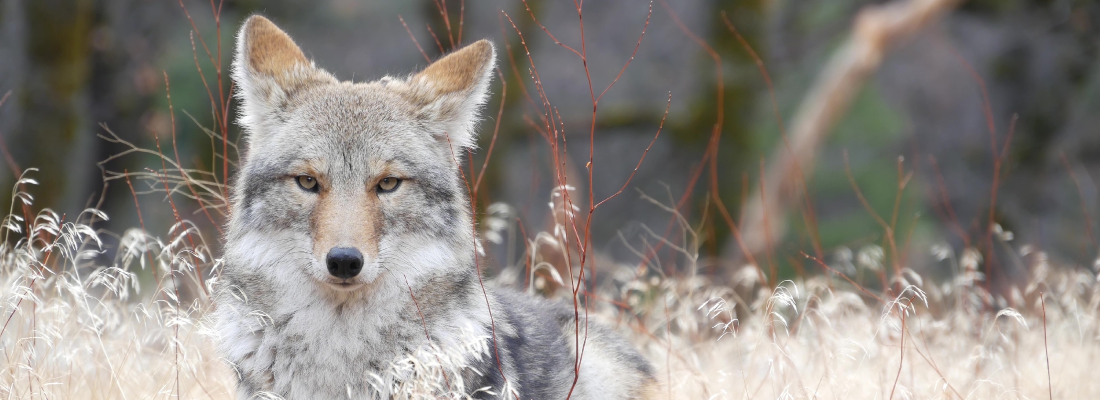
From the Plateau Land & Wildlife Management Team
As the weather begins to change here in Central Texas, the cooler breeze has ignited the holiday spirit among us all.
2023 is almost in the rear view, and is the ideal time to take a pause and celebrate all it had to bring. As we approach the year’s end, we invite you to reflect upon your wildlife management journey as well, considering the strides and endeavors that have shaped your path. This Seasons’ is full of timely tips and year-end considerations for Texas landowners.
Review your goals for the new season and be sure to add wildlife management valuation to your list of accomplishments you want to continue – because the investment in your land and protection of our natural resources is pivotal when it comes to the land that will be loved and enjoyed for years to come.
Of course, if you have questions or would like to discuss your property tax options with an experienced member of the Plateau team, please give us a call at (512) 894-3479! We will be here when you need us.
Happy holidays to you and yours.
Until next Seasons,
Table of Contents
End of the Year Wildlife Management Activities
Rare Bird Alert’ First-Ever Sighting of Gray Collard Becard Recording in Texas
Managing Small Acreage for Wildlife
Winter Wildlife Management Webinar Series
Court Sides with Landowner in Fence Law Case Following Collision on Highway
News for Texas Landowners
END OF THE YEAR WILDLIFE MANAGEMENT ACTIVITIES
By Kameron Bain, Landowner Account Manager
Don’t let 2024 sneak up on you before you complete your 2023 wildlife management activities!
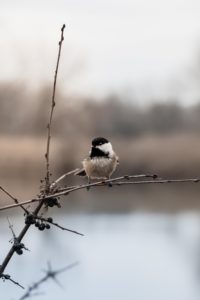 As the end of the year rapidly approaches, we want to make sure you are on track to finish your qualifying wildlife management activities and that they are well documented. The good news is, if you still need to meet any of your wildlife management requirements for 2023, it’s not too late. There are plenty of winter activities to choose from, and of course, Plateau is always here to help when you need us.
As the end of the year rapidly approaches, we want to make sure you are on track to finish your qualifying wildlife management activities and that they are well documented. The good news is, if you still need to meet any of your wildlife management requirements for 2023, it’s not too late. There are plenty of winter activities to choose from, and of course, Plateau is always here to help when you need us.
Year-End Wildlife Management Activities
- Brush management
- Remote camera wildlife survey
- Deer, wild pig and exotic harvest
- Re-seeding wildflowers and native grasses
- Strip mowing and discing
- Chemical control of prickly pear
- Cut-stump herbicide treatments
- Tree and shrub planting
- Brush pile construction
- Wildlife products and installation (food, water, shelter)
- Annual Report ($550): Let the experienced team at Plateau professionally prepare this important report and rest assured that it’s been done right.
- Wildlife Management Activities Check-Up ($595): Assess your property, documentation and current activities with a Plateau biologist to ensure compliance.
- Consulting Site Visit ($795): Spend a few hours with a Plateau biologist touring your property. This personal site visit is customized to the characteristics of your property, its wildlife and you.
Uncertain about whether or not you’re meeting wildlife management requirements? Plateau can help! All of our Plateau products and services are designed to fulfill your wildlife management activity requirements. If you have questions about any of your activities, or are interested in purchasing a Plateau product or service, please contact us at (512) 894-3479 or email [email protected].
Back to TopBack to Top
‘RARE BIRD ALERT’ FIRST-EVER SIGHTING OF GRAY-COLLARED BECARD RECORDING IN TEXAS
Article by Jeff Bell, KVUE
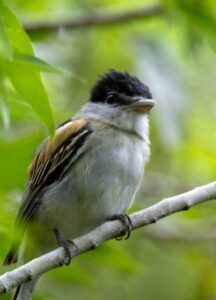 BROWNSVILLE, Texas – Birders are flocking to a Texas state park to see a rare bird. According to Texas State Parks, the gray-collared becard was recently seen at Resaca de la Palma State Park near Brownsville. This is the first ever recorded sighting of the bird in Texas.
BROWNSVILLE, Texas – Birders are flocking to a Texas state park to see a rare bird. According to Texas State Parks, the gray-collared becard was recently seen at Resaca de la Palma State Park near Brownsville. This is the first ever recorded sighting of the bird in Texas.
The species was first seen in the U.S. in 2009. The second U.S. sighting was just six months ago, in May 2023. The bird is more commonly found in Central America. “Birders from far and wide flocked to Resaca de la Palma State Park to share the experience,” Texas State Parks said in a post on X, formerly know as Twitter, accompanied by photos of birdwatchers gathering to take photos of the bird. “The Valley really is an amazing place to spot some once-in-a-lifetime wildlife!”
Brandon Nooner, a wildlife biologist with the U.S. Department of Agriculture, captured a photo of the rare bird perched on a tree branch. According to the American Birding Association, the gray-collared becard typically lives from northwestern Mexico (eastern Sonora) to El Salvador and central Nicaragua. It is distinguished from other becards by its combination of brown cap and mantle, broad white collar (gray in adults), black wings with broad white feather edgings and very pale underparts.
On its website, Texas State Parks calls Resaca del Palma State Park a “Rio Grade treasure” and “semi-tropical paradise.” The park includes over 8 miles of trails, four desks overlooking the resaca, tram tours and ranger programs.
Back to TopBack to Top
MANAGING SMALL ACREAGE FOR WILDLIFE
Presented by Certified Senior Wildlife Biologist Mark Gray
No matter the property size, it can seem like a daunting task about what to do first. Who do you call, how to prioritize the ever growing list of projects, or what steps to take to get the most out of your wildlife property.
Join Certified Wildlife Biologist Mark Gray as he discusses where to begin, type of species to look for, water sources you may have, and shelters to have in place when it comes to managing small acreage for wildlife.
WILDLIFE MANAGEMENT WEBINAR SERIES: COMING SOON
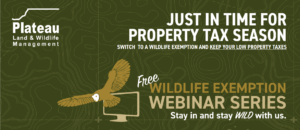
You’re invited to our FREE Wildlife Management webinar series this winter and spring!
Whether you’re already a Plateau customer or someone that wants to learn more about Wildlife Management, everyone is invited to join us for our FREE 2024 Wildlife Management Winter Webinar Series. Connect with experts and other Texas landowners in Wildlife Management and learn all about:
Wildlife Management Exemption, Wildlife Management 101, Qualifying Wildlife Activities, Property Taxes, Wildlife Management Plans, Annual Reports, County Requirements, Texas Regional Topics, Open Questions & Answers and more! Stay tuned for registration opportunities!
COURT SIDES WITH LANDOWNER IN FENCE LAW CASE FOLLOWING COLLISION ON HIGHWAY
Article by PLW Staff
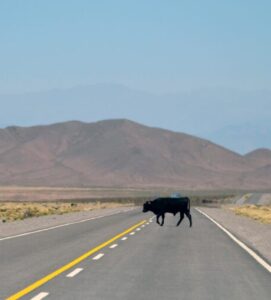
The recent case of Arraby Properties, LLC v Brown has brought to life the peril of retaining livestock beyond your capabilities and relying on lessees. The context of this involve Paul Brown and when he collided with a cow on State Highway 225 in Harris County, Texas, resulting in a diagnosis of mild cognitive impairment.
An elderly couple, Eugene and Mary Alice Ybarra, resided on a 5.8-acre plot a few miles from the highway. They had owned that land since 1973 and, for at least five years leading up to the incident, lived there with a “pet cow.” In 2016, the Ybarras transferred ownership of the property to Arraby Properties, LLC, a company owned by their children Victor and Troy. Through the transfer, Mr. and Mrs. Ybarra continued to reside on the land and it was reported a cow went missing from the property two days before the collision.
Mr. Ybarra was sued for negligence and gross negligence by Mr. Brown claiming that he deliberately let the pet cow roam freely which included alongside the State Highway. Later the lawsuit would include Mrs. Ybarra, Arraby Properties, LLC, and children Victor and Troy. As time went on, Mr. and Mrs. Ybarra were dismissed from the claims.
The court conducted a two-day trial. Victor detailed the property setup and specified that it was enclosed by two fences. No written agreement was found between Arraby Properties, LLC and Mr. and Mrs Ybarra when it came to fence maintenance even though Alice Chandler, the Ybarras’ daughter, testified about her parents’ physical limitations at the time of the accident to keep up with the cow or fencing. Bob Kingsbery, a fencing expert, testified that he believed the cow must have escaped and concluded that Troy and Victor were conscience of this and their parents declining ability to maintain fencing on the property which allowed the cow to roam on the highway. The court held Arraby accountable for the roaming cow, awarding $3.1 million to Brown. Victor and Troy were not personally liable. Arraby appealed.
Original article published by Tiffany Dowell for Texas Agriculture Law Blog.
To learn more about this case here.
News for Texas Landowners
Texas birders are cuckoo for the Cattle Tyrant, Never Before Seen in North America
Article by Christopher Collins, for Texas Monthly
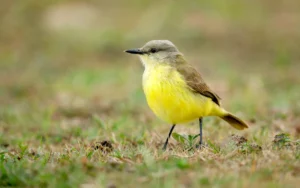 Corpus Christi is home to more than two hundred species of birds: endemic and exotic, migratory and mainland, gigantic as a whooping crane and tiny as a ruby-throated hummingbird. This stunning variety of avian life at the elbow of the Texas Gulf Coast has repeatedly earned the city the title of “Birdiest City in America,” awarded by the Audubon Society.
Corpus Christi is home to more than two hundred species of birds: endemic and exotic, migratory and mainland, gigantic as a whooping crane and tiny as a ruby-throated hummingbird. This stunning variety of avian life at the elbow of the Texas Gulf Coast has repeatedly earned the city the title of “Birdiest City in America,” awarded by the Audubon Society.
For decades the region’s bounty has drawn considerable interest from birders and anyone else who deals in binoculars and birdseed. But times change. Things are different now. There’s a new player on the scene—and he is sensational. So sensational that, until further notice, all other feathered denizens of the greater Corpus Christi area have been demoted to the role of background dancers supporting their new leading man. This new ruler of the Corpus roost is a tyrant in every meaning of the word. As such, he demands fealty from his two-legged flock, who are presently converging on the seaside town.
Kicking off family Christmas with the perfect tree
Article by Randi Williams, Texas A&M AgriLife Communications
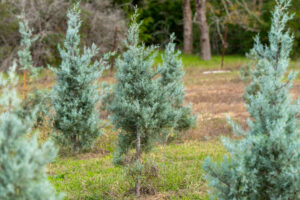 Texas Christmas tree production continues to hold strong despite impacts from extreme drought, according to a Texas A&M Forest Service expert. Fred Raley, Ph.D., Texas A&M Forest Service tree improvement coordinator, said he is expecting another year of high demand for Christmas trees.
Texas Christmas tree production continues to hold strong despite impacts from extreme drought, according to a Texas A&M Forest Service expert. Fred Raley, Ph.D., Texas A&M Forest Service tree improvement coordinator, said he is expecting another year of high demand for Christmas trees.
“Christmas trees are usually planted through November and March, the trees being sold for this year’s holiday season were actually planted four years ago to reach the mature height of 6 to 8 feet.” said Stan Reed, executive secretary for the Texas Christmas Trees Growers Association. Like many other crops this year, producers who were not able to adequately irrigate their Christmas trees saw that some of their crop struggled, but not enough to decline production.
Article By Joshua Rapp Learn for The Wildlife Society
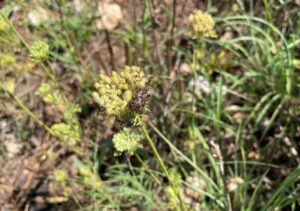
Invasive fire ants are preying on native butterfly species, so much so that they may be reducing their abundance at some sites in Texas. “Fire ants are bad for butterflies,” said Emily Geest, a postdoctoral fellow in conservation science at the Oklahoma City Zoo and Botanical Garden.
Red imported fire ants(Solenopsis Invicta) are native to parts of Brazil and Argentina. They were first introduced to the United States in Mobile, Alabama in the 1930s. Since then, they have spread through neighbouring states, preying on and killing native birds, reptiles, amphibians, small mammals and now, it appears, insects.
RACA program adds new sites for public fishing, paddling access
New Release for Texas Parks & Wildlife
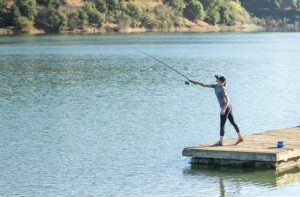
AUSTIN – The Texas Parks and Wildlife Department (TPWD) expanded public fishing and paddling opportunies on the Brazos and Colorado rivers thanks to three new leased river access sites through the River Access and Conservation Area (RACA) program.
The new RACA sites on the Brazos River are upstream of Lake Granbury in Parker County and feature three combined access points. The new Colorado River RACA site is located near the cit of Bastrop just off FM 969. “Historically in Texas, recreation on rivers has been limited by lack of quality public access,” says John Bostros, TPWD river access coordinator.”
Texas Parks and Wildlife warns of possible self-cloning invasive species
Report by Melissa Guz for KCEN
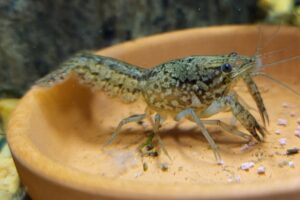
TEMPLE, Texas – Texas Parks and Wildlife is warning Texans about the possibility of an invasive species: the Marbled Crayfish. On Wednesday, TPW took to social media and warned folks who may have these critters in their aquariums not to dump them into the wild because of their ability to reproduce.
The organization said these crayfish are all-female and can reproduce without males by cloning; the “release of a single individual could start an entire invasive population.” According to the State of Michigan, where there’s a ban on marbled crayfish, a single crayfish has “the ability to lay up to 700 unfertilized eggs that develop into genetically identical offspring.”
How to help beneficial insects survive winter
Article By Susan Himes for Texas A&M Agrilife Today
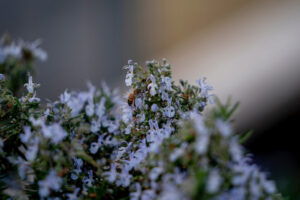
While a decrease in insects as the weather cools is a plus to many people, Texans should keep in mind that beneficial insects in gardens and yards could use a little help.
“Although many insects die off in the colder months, some hibernate while others are still active as needed,” said Sonja Swiger, Ph.D., Texas A&M AgriLife Extension Service entomologist and professor in the Department of Entomology in the Texas A&M College of Agriculture and Life Sciences, Stephenville. Some insects have it harder than others depending on where they are in Texas. Some also migrate south to locations where the climate is typically milder.
Texas backs out of effort to save Fairfield Lake State Park through eminent domain
Report by Ryan Osborne for WFAA
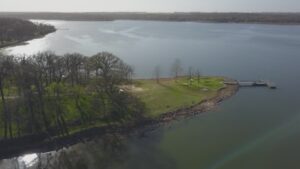
FAIRFIELD, Texas – The Texas Parks and Wildlife Department is backing out of its efforts to keep Fairfield Lake State Park alive. The park’s land, which was leased by the state to operate the park, came under new ownership this year after the land was sold to a private developer from Dallas.
The Texas Parks and Wildlife Department (TPWD) commissioners voted in June to condemn the property and seize it through eminent domain, which would have provided a path to keep the park open. But the agency on Tuesday announced that it will no longer pursue acquiring the land through eminent domain.
Why we are seeing more Green Jays across South Texas
Article by Rose Cahalan for Texas Monthly
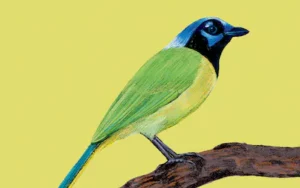
Imagine a blue jay who comes back from a Cancún resort with a jaunty new wardrobe. That’s the green jay, one of the most colorful birds in Texas. Its dramatic blue-and-black face evokes a lucha libre wrestler’s mask, while the bright yellow belly, lime-green back, and teal tail feathers are straight from a watercolor palette.
This is one of the charismatic fliers that make the Lower Rio Grande Valley a global birding destination, especially in winter. More than five hundred species, or 45 percent of all of those found in the U.S., have been seen in the region.
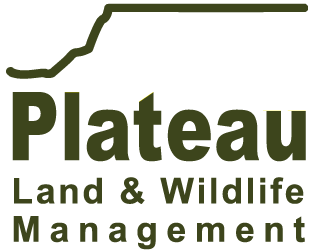




Sorry, the comment form is closed at this time.